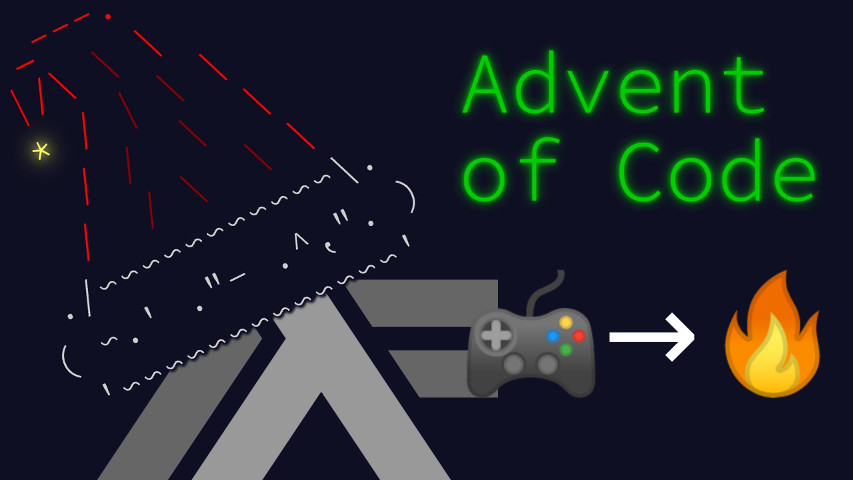The title hints at the halting problem, but careful simulation is sufficient to solve today’s problem.1 This post is a legitimate literate Haskell program starting with page after page of language extensions and imports.
{-# LANGUAGE GeneralizedNewtypeDeriving #-}
{-# LANGUAGE NamedFieldPuns #-}
{-# LANGUAGE RecordWildCards #-}
{-# LANGUAGE ViewPatterns #-}
import Control.Applicative
import Control.Monad.Trans.Accum
import Data.Functor.Identity
import Data.List
import qualified Data.Set as S
import Data.MonoidI’ll take the easy route to parsing, and merely split words and convert the argument to an integer.
data Instruction = Instruction { operation :: String, δ :: Int }
decode :: String -> Instruction
decode (words -> [operation,argument]) =
Instruction{operation,δ = readSigned argument}
readSigned :: String -> Int
readSigned ('+':n) = read n
readSigned n = read nI shortened the argument to δ as it’s only ever added to either the instruction pointer or the accumulator.
Speaking of which, I’ll newtype them so I don’t mix them
up by mistake.
newtype Address = Address Int deriving (Eq,Ord,Num,Real,Enum,Integral)
newtype Value = Value Int deriving (Num,Show)Now to simulate. I’ll use an open-out design, where various components are delegated to callbacks that I’ll vary between parts 1 and 2.
simulate :: Monad m
=> (Value -> m Value)
-> (Value -> m Value)
-> (Instruction -> m (Address,Value))
-> [Instruction]
-> m Value
simulate loop eof eval is = go S.empty (Address 0) (Value 0) where
go cl ip acc
| ip `S.member` cl = loop acc
| ip == genericLength is = eof acc
| otherwise = do
(δ_ip,δ_acc) <- eval (is `genericIndex` ip)
go (S.insert ip cl)
(ip + δ_ip)
(acc + δ_acc)The generic-* method names may be a bit verbose, but
such is the price of protection from integer mixups.
The components I extracted are:
- what to return when a loop is detected
- what to return when the end of the program is reached
- how to actually interpret the instructions
The first two callbacks take the value of the accumulator as an input.
The last one takes an instruction and returns the values to add to the CPU’s state, namely the instruction pointer and the accumulator. In a monadic context, about which I’ll expand later on.
Obviously, I’ll need an actual implementation. Transcribing the statement:
evaluate :: Applicative m => Instruction -> m (Address,Value)
evaluate Instruction{..} = pure $ case operation of
"nop" -> (Address 1,Value 0)
"jmp" -> (Address δ,Value 0)
"acc" -> (Address 1,Value δ)The simple evaluation model is really monad-agnostic, so all it needs
is pure from Applicative to return a
result.
Now I can wire things up to solve part 1.
part1 :: [Instruction] -> Value
part1 = runIdentity . simulate pure (error "Reached end") evaluatePart 2 asks to make the single nop/jmp switch that makes the program terminate. As termination isn’t an immediately observable behavior, simulation needs to continue after a choice is made, so I’ll need backtracking. And I’ll need some form of memory to allow myself a single change only.
So I’ll use an AccumT monad transformer over a list
monad. Evaluation always delegates to the simple model, and then also
attempts an instruction flip if memory allows.
evaluate' :: Instruction -> AccumT Any [] (Address,Value)
evaluate' i@Instruction{..} = evaluate i <|> do
Any flipped <- look
add (Any True)
case (flipped,operation) of
(True,_) -> empty
(False,"acc") -> empty
(False,"nop") -> pure (Address δ,Value 0)
(False,"jmp") -> pure (Address 1,Value 0)It may be noteworthy the instruction alteration is never actually recorded: since loops are going to result in immediate failure, just temporarily operating differently is enough.
The wrapper sets up the monad transformer while also taking care of
rejecting simulations that lead to loops (the const empty
component).
part2 :: [Instruction] -> [Value]
part2 = flip evalAccumT (Any False) . simulate (const empty) pure evaluate'It so happens my input has a single solution. Here’s the rest of the code for completeness.
main :: IO ()
main = do
code <- map decode . lines <$> readFile "day08.in"
print $ part1 code
print $ part2 codeThis concludes today’s solution. See you soon!
But proving it on such a simplistic architecture is feasible.↩︎



